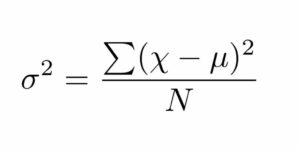Deciding on an Inventory Valuation Methodology in Dynamics 365
As you migrate to a new system it might be time to re-evaluate your inventory valuation methodology. Here are some things to consider when you decided if you should leverage Standard Cost or a form of Actual Cost. Please note there are multiple variations to Actual Costing Methods in D365. This will discuss the overall benefits and challenges of Actual Cost methodology verses a Standard Cost methodology.
GAAP

Actual Costing is in accordance with GAAP, so no additional inventory revaluation is required for external reporting.
Standard Cost is not acceptable by GAAP for external reporting. The variances created by Standard Cost transactions to the P&L need to be capitalised back to the Net Inventory value. Typically, this is known as the “Standard to Actual” adjustment.
Inventory Valuation
Actual Costing has greater inventory valuation integrity. However, this leads to an assumption that reality keeps up with valuation. This is not the case. In any of the Actual Costing methods, the final valuation is at the point of financial posting. For a production order this occurs when it is ended. For a purchase order it is at the point of invoicing. For example: an item can be received and shipped (on a sales order) at a unit price of $1 per unit, then the PO is invoiced at $1.50. This will change margin reporting over time. This changing value can cause confusion and reconciliation issues due to a constantly changing value.
Standard Cost’s valuation integrity is not as strong. The benefit is the inventory reconciliation is simplified. Reporting remains consistent over time due to the fact there is a consistent valuation of inventory.
Transaction Integrity
In an Actual Cost environment, you can add “true” landed costs. This type of addition can add transactional control and integrity that Standard Cost has a difficult time duplicating. The challenge with this is twofold: 1) to truly achieve transactional integrity serialisation of part numbers is preferred. Then the value is known by part number/serial number and the system does not have to assume first in first out. This creates much more work for inventory control personnel; 2) multiple cost for an item in inventory makes understanding inventory value, and reconciliation difficult.
Standard Cost simplifies transactions by using a single value for the inventory value. Inventory valuation, reconciliation and variances are simplified. Variances are recorded and identified at a transactional level. No true landed cost and/or additional miscellaneous charges can be applied to inventory valuation at an actual rate. Any additions to inventory valuation need to be determined up front based on budgeted numbers. An example: inbound freight for the year will be $1,000, purchasing will be 2,000 units so we will add $0.50 to our standard cost. Any actual difference will not be captured.
Variance Analysis

Actual Costing Methods have no predefined cost, so no variances to track. This means no variance analysis available. Actual Cost is a method that I call “it is what it is” method. A variance can be created in Actual Costing, but it has nothing to do with the inventory valuation. It is when you have a financially posted value that cannot go back into a closed period (timing issue) to revalue the original inventory valuation.
Standard Cost require Variance Analysis to determine the health of the inventory system. This analysis will determine production and purchasing assumptions were correct. This can add to higher overhead costs to manage these variances.
Valuation by Location
As stated above all actual costing are “it is what it is” so the cost will follow the item from cradle to coffin. Because the inventory maintains the value when selling internally, ‘profit in inventory’ becomes a consideration. For reporting purposes profit in inventory must be removed and can be quite complex due to the nature of multiple values and the timing of the release of those values.
In Standard Cost environment it is easier to identify Profit in inventory. The internal selling and buying companies have set costs. When inter-company purchase order and sales order are created, all the variance is equal to the inter-company profit. It is simple to eliminate during the consolidation process
Margin Recognition

Actual Costing supports the matching principle in accounting systems. Because the inventory carries the realised valuation to the point of revenue recognition an actual COGS is recognised. Margins are not normalised.
Standard Cost normalises margins. Normalised Customer Margins for some organisations is ideal, especially if there is little or immaterial variation in inventory valuations. Unfortunately, Standard cost does not allow for the variation at the SKU level. This causes a very manual process to show an actual margin at a customer level.
Variance Timing
Actual Costing recognition of inventory variation is at the point of revenue recognition. Margins will be greater or smaller based on the inherited variances in the inventory.
On the other hand, for Standard Cost inventory variation is known at the beginning of the inventory life cycle. Variance occur on the originating transaction not at the point of revenue recognition. In Std Cost Margin is normalised. Inventory variance recognition is the biggest upside to a Std Costing methodology.
Management
Organisational management of Actual Costing is much more critical. Since Production Orders and Purchase Orders directly determine the inventory valuation, establishment and processing of these documents are critical. Once one of these transactions are finalised it is much more difficult to identify and correct the inventory value. Typically, Actual Cost has more (and more difficult) evaluation of valuation than Standard Cost.
Maintenance of Standard Cost is a requirement. An organisation must set the rules around when ordinary update to the costs occur. Keep in mind that anytime a Standard Cost is update it immediately revalues inventory, creating a P&L adjustment.
D365 Inventory Close – This is required to finalise valuation of inventory for reporting. At times this can be a difficult task. This is critical for maintaining a healthy Actual Valuation in D365.
Standard Cost does not require an inventory close.
D365 Concept of Physically Posted Inventory vs Financially Posted Inventory – This concept is very important to Actual Cost. This concept is what changes the inventory value over time and why there is an Inventory Close Process. Understanding of the timing and consequences of these posting are of the upmost importance when reconciling “Actual” Inventory Valuation.
Not relevant to “Standard” Inventory Valuation, but important to variance timing. You can have two variances created as inventory enters the system. Purchase price variance (initial receipt of inventory – Physical Posting) is the first type of variance. The second type of variance is at the point of Financial Posting (invoicing a PO or ending a production order), and it is known as the invoice Variance.
As you can see there are a lot of positives and negatives when choosing your Inventory Value Methods.
The good thing is D365 can support either Costing type you decide to implement in your organisation.
About Bret Baker – Senior Dynamics 365 Financial Consultant
Brett has 15 years of Financial/Cost Accounting industry experience and nine years of experience as an AX Finance consultant. Working in light to heavy manufacturing environments including subcontracted manufacturing models. Wide breadth of manufacturing industries from food to high tech to printable foils. Highly focused on manufacturing processes and inventory control reporting; Of which three of those years were as an AX end user.
